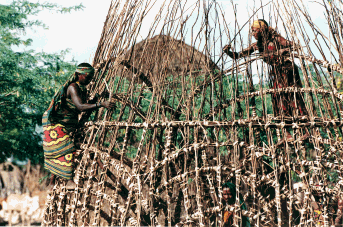SummaryThis case study is taken from a pilot household survey investigating the cattle breeding practices of the Orma people in eastern Kenya. The case study combines questionnaire and quantitative measurement approaches to assess levels of milk production by village Orma Boran cattle and the extent to which these are surplus to the consumption needs of the household. It demonstrates the application of methods of regression analysis to compare associations in milk offtake with age of calf of cows kept in two separate village locations. Having explored graphically the nature of the relationships the case study shows how to fit separate regression lines for each location, firstly in parallel and secondly with different slopes. Reporting methods for the presentation of results of regression analysis are also illustrated. The results are then used together with data collected on average daily household consumption to assess the levels of surplus milk offtake available for sale by a household. |
||
The case study then goes on to consider the suitability of the survey approach in answering the different aims of the project. One aim was to determine avenues for further research. Important information was gained about the extent of trypanosomosis in the cattle and the methods that farmers were using to control the disease. This led to further investigations using participatory methods to gain more information from farmers on their knowledge of disease and to seek recommendations from them on the best options for future disease control. Data analysis is illustrated by both R and GenStat software. |
 Source: Bernard Sacher |
|